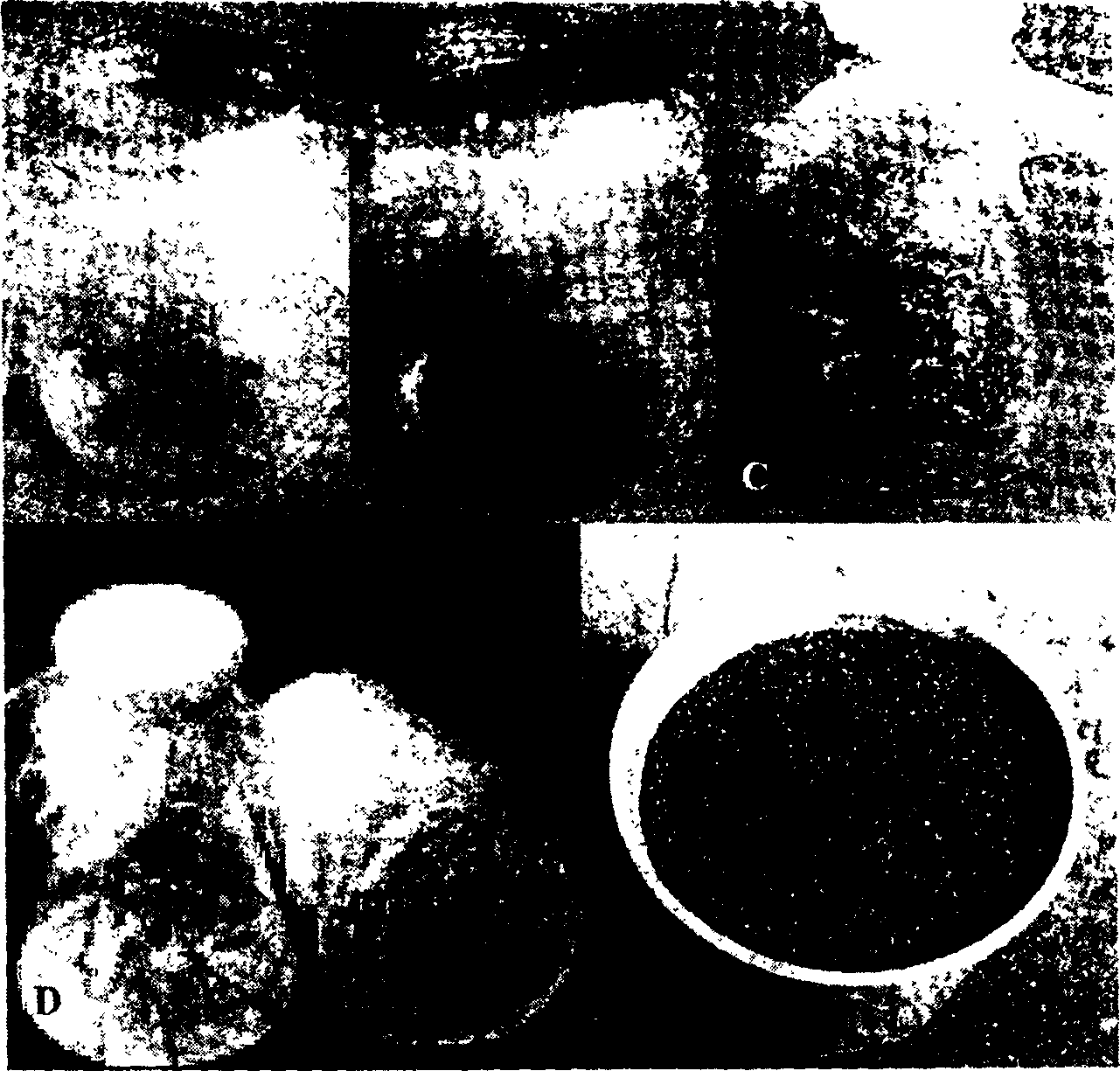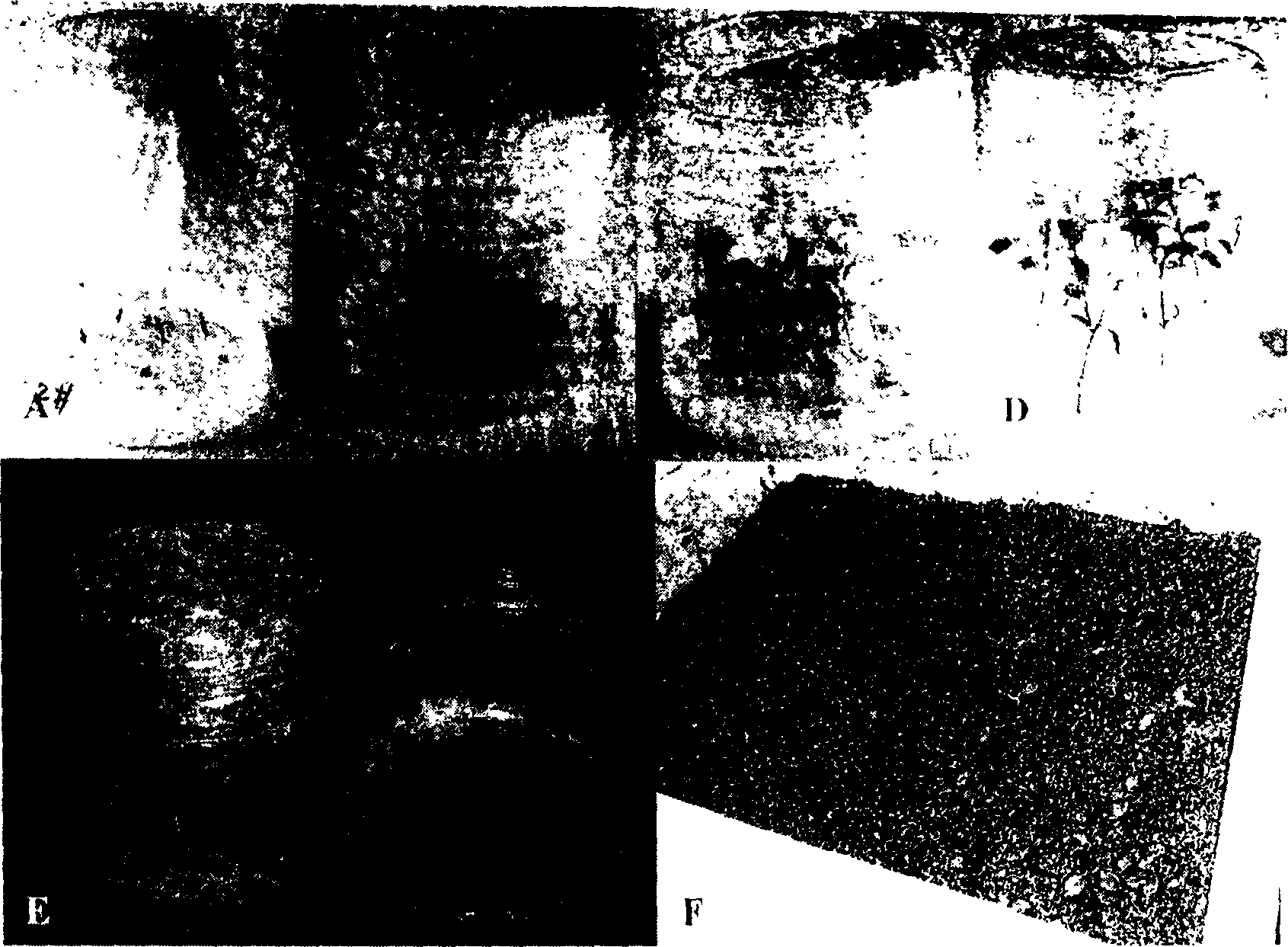High-frequency test tube plant regeneration and industrial seedling growing of smoke tree
A test-tube plant and high-frequency technology, applied in the field of culture medium, can solve the problems of mixed good and bad, low reproductive efficiency, and no available female parent, and achieve the effect of uniform seedlings, high reproductive efficiency, and pure species
- Summary
- Abstract
- Description
- Claims
- Application Information
AI Technical Summary
Problems solved by technology
Method used
Image
Examples
Embodiment 1
[0012] Example 1: Surface disinfection of explants
[0013] The pure species of Rhizoma sinica was used as the female parent tree for explants. Collect young shoots, new shoots and semi-lignified 1-year-old shoots as explants. After the shoots are removed, rinse them with tap water for 30 minutes, and rinse the new shoots and semi-lignified 1-year-old shoots with tap water for 30-60 minutes, cut into 3 -5cm stem segments. The washed buds and stems are soaked in 70-75% alcohol for 10-15s, then transferred to 3-5% sodium hypochlorite solution for 5, 10, 15 or 30 minutes, or transferred to 1-2% arsenic-mercury solution Medium treatment for 5, 10, 15 or 20 minutes, or after disinfection by sodium hypochlorite, transfer to arsenic and mercury solution for further disinfection. Immediately after surface disinfection treatment, rinse with sterile water 5 times for at least 5 minutes each time. The surface-sterilized young shoots and 1-year-old semi-lignified shoot explants were cu...
Embodiment 2
[0030] Example 2: Selection of explants and minimal medium
[0031] There are 7 kinds of basic medium tested: MS (Murachige and Skoog, 1962), B5 (Gomborg et al., 1968), WPM (Woody Plant Medium, Lloyd and McCrown, 1980 ), Lescure (Lescure, 1966), MS-B5 (MS inorganic salts and B5 organics), WPM5 (WPM inorganic salts and B5 organics), and L5 (Lescure 5 inorganic salts and B5 organics). For callus induction and bud differentiation, the sucrose concentration in the above basic medium is 3%, and the agar is 0.7% (or 7g / L). After the basic medium is prepared, add BA 5.0mg / L and 2,4-D 2.0mg / L, adjust the pH to 5.6-5.8, divide into bottles or autoclave and then divide into petri dishes, each bottle is about 60ml, 25-30ml per Petri dish. The medium was autoclaved at 125°C for 20-25min.
[0032] Three kinds of surface-sterilized explants (tender shoots, young shoots and semi-lignified shoots) were inoculated into the above medium, placed in the dark at 25±2°C for cultivation, and by...
Embodiment 3
[0048] Example 3: Effect of Plant Growth Regulator (PGR) on Callus Induction
[0049] According to the result of embodiment 1 and 2, use tender shoot as explant, take WPM5 as basic medium, have studied cytokinin BA, 2IP, KT or ZT (0,0.5,1.0,2.0 or 5.0, unit: mg / L, the same below) alone and in combination with auxin 2,4-D, IAA, IBA or NAA (0, 0.5, 1.0, 2.0, 3.0 or 5.0) on callus induction. The preparation of the culture medium was carried out according to the method of Example 2, and the disinfection of the explants was carried out according to the method of Example 1. The inoculation method of the explants was carried out according to the method in Example 2.
[0050] The cultures were grown in the dark for 2 weeks, then switched to light. 16 hours of light and 8 hours of darkness every day, the light intensity is about 1000-1500Lx. The culture temperature is 25±1°C.
[0051] Observation and statistics after 4 weeks of culture, in the presence of 2,4-D (0.5, 1.0, 2.0 or 5...
PUM
 Login to View More
Login to View More Abstract
Description
Claims
Application Information
 Login to View More
Login to View More - R&D
- Intellectual Property
- Life Sciences
- Materials
- Tech Scout
- Unparalleled Data Quality
- Higher Quality Content
- 60% Fewer Hallucinations
Browse by: Latest US Patents, China's latest patents, Technical Efficacy Thesaurus, Application Domain, Technology Topic, Popular Technical Reports.
© 2025 PatSnap. All rights reserved.Legal|Privacy policy|Modern Slavery Act Transparency Statement|Sitemap|About US| Contact US: help@patsnap.com


